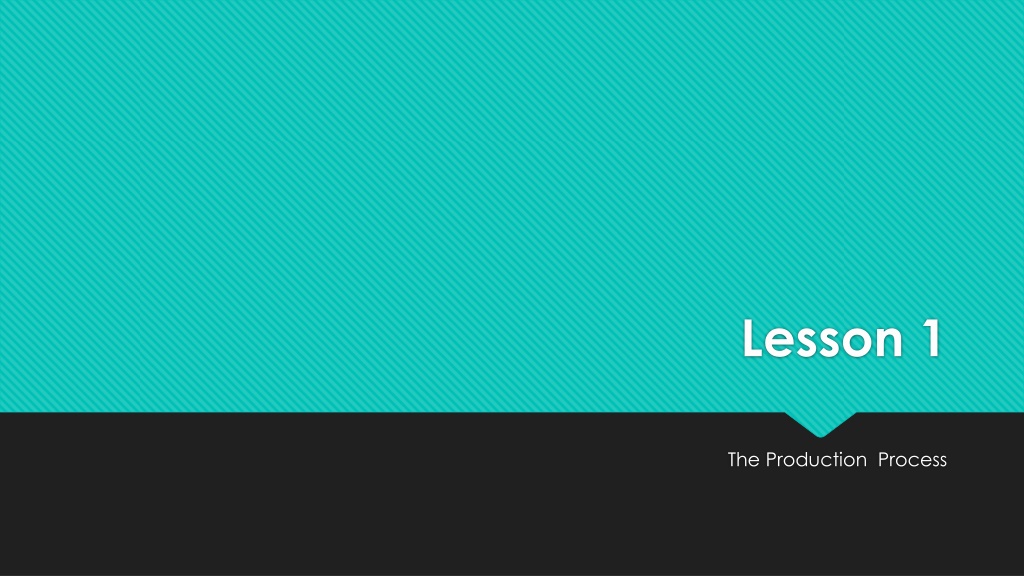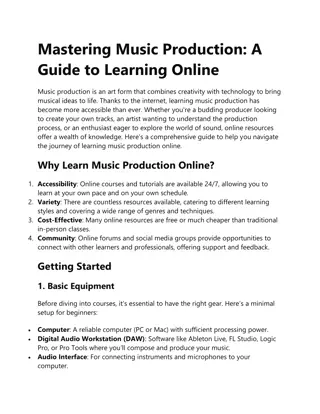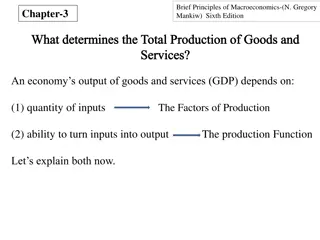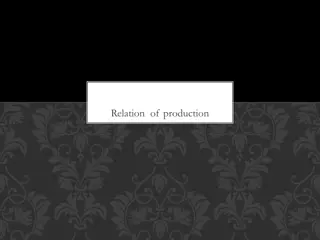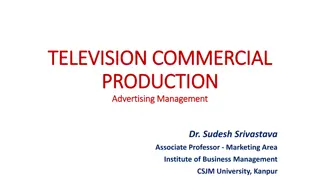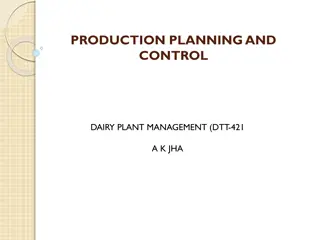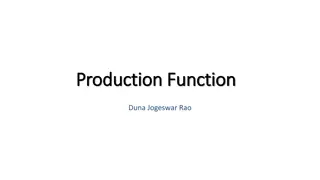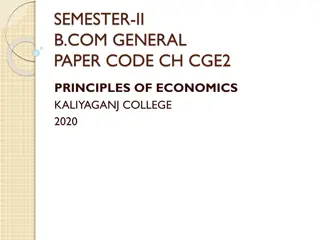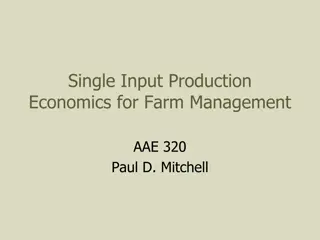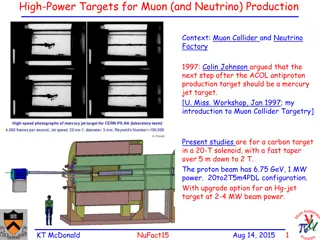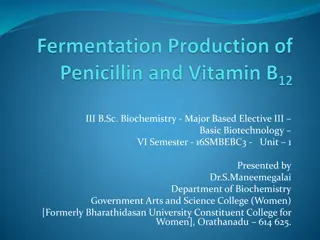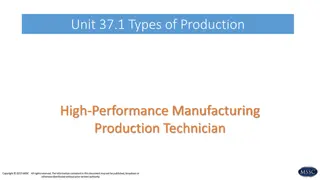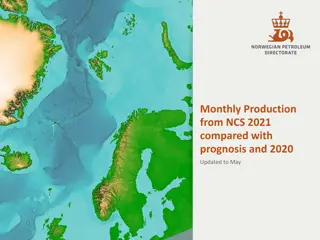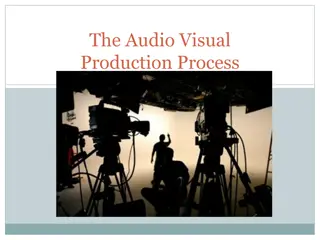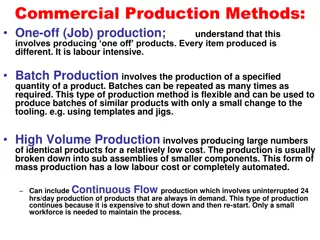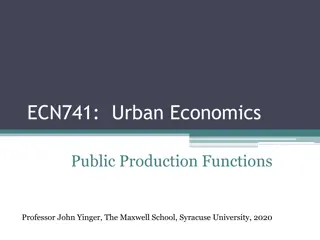Understanding the TV Production Process
Exploring the intricacies of TV show production, this content delves into the planning stages, production model, and three phases of production – preproduction, production, and postproduction. It highlights the importance of developing a program objective, selecting talent, and evaluating ideas to create successful television content.
Download Presentation

Please find below an Image/Link to download the presentation.
The content on the website is provided AS IS for your information and personal use only. It may not be sold, licensed, or shared on other websites without obtaining consent from the author. Download presentation by click this link. If you encounter any issues during the download, it is possible that the publisher has removed the file from their server.
E N D
Presentation Transcript
Lesson 1 The Production Process
Do Now What are some of your favorite TV shows? How much planning do you think goes into creating a TV show?
The Production Model Effect-to Cause Model: once you have developed the initial idea, you move directly to what, ideally, you want the viewers to learn, feel, or do this is called the process message. The production model suggests that rather than move from the initial idea to the production, you jump from the initial idea to a program objective the desired effect on the viewer. Then and only then do you back up and decide on the medium requirements necessary to produce the intended communication effect. Medium Requirements: re-expressed as workflow that includes selecting talent, determining technical and nontechnical personnel, and requesting studio or field facilities and equipment.
Three Phases of Production Preproduction: The preparation of all production details. Stage 1: all activities necessary to transform the basic idea into a workable concept or script -This is where you can brainstorm or cluster ideas with your crew/group. Stage 2: production details such as location, crews, and the necessary equipment. Production: The actual activities in which an event is recorded and /or televised. It includes all activities in which an event is video-recorded or televised. Postproduction: Any production activity that occurs after the production. Usually refers to either video editing or audio sweetening (a variety of quality adjustments of recorded sound). Video & audio editing. Color correction. Background music selection Special effects
Preproduction From Idea to Script Program Objective: Exactly what is it that you want the audience to know, feel, or do. Angle: an angle is a specific approach to the story a point of view of the event. Effective video programs often have an angle that is different from the usual treatment of the same subject and is more relevant to the viewer. Evaluating Ideas Is the idea worth doing? It should have a positive influence on someone's life. Is the idea doable? Do you have or can you get all medium requirements? If the answer to both these questions is maybe then don t go any further.
Understanding the Process Message Once you have developed the initial idea, you move directly to what, ideally, you want the viewers to learn, feel, or do this is called the process message.
Program Proposal Program Proposal A program proposal is a written document that stipulates what you intend to do. It includes the following: Program Series or Title Program Objective: the process message is to Target Audience: whom you would primarily like to have watch the show- the elderly, preschoolers etc. You can define the target audience further in terms of demographics such as gender, ethnicity, education income, household size, religion and geographical & location. Show Format: Is it a series? How long does it run? Is it a 1 hour special? Is it a commercial? Show treatment: A brief narrative description of the program. It should explain the angle & plot fully. Production method: single or multi camera set-up? Single camera film-style? Studio production etc. Tentative Budget: How much do you estimate this will cost?
Worksheet Activity Please complete the Chapter 1 Review Worksheet.
Lesson 2 Careers in TV & Film
Careers in TV & Film Each groups will be assigned a set of jobs within the field of TV & Film. Your group will be responsible to research the following things about those particular jobs: Definition and description of career Education & Training Salary & Benefits Spelling & Grammar You and your group will have 3 class days to create a PowerPoint, keynote or prezi or create a short video about the given jobs.
Lesson 3 LBHSTV News Broadcast
Writing LBHS TV News You may team up with 1-2 people in this class. Today we will be finding leads and writing stories for events that took place last week, or over the weekend. You may also include an update for an upcoming event. You and your partners will write a newscast containing all 5 W s but under 2 paragraphs. These stories will be critiqued by your classmates. The will be edited by your group and then submitted/saved to the server. This will be our weekly schedule until the end of the semester.
Studio Production Each of you will be given a job in the studio. These will switch every week. It is you job to look over the job requirements and to complete all tasks on your sheet throughout the production process. From now on we will write and produce LBHS news each week. One day we will write the next we will produce.
